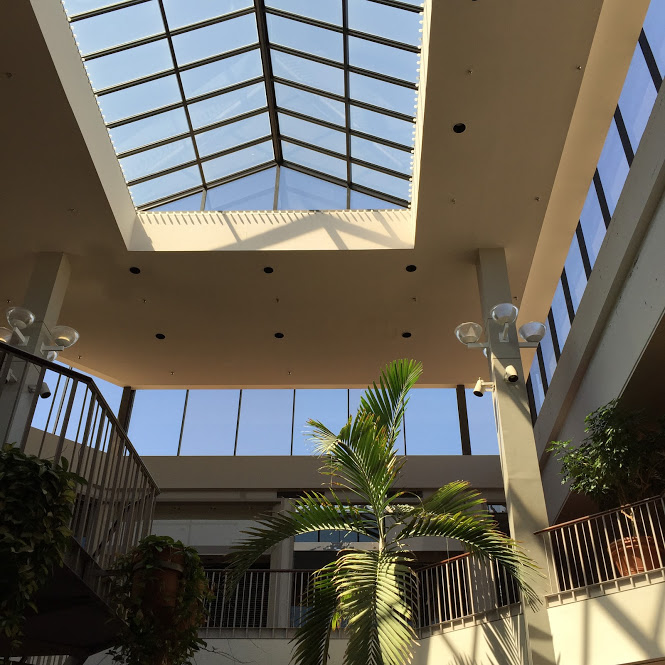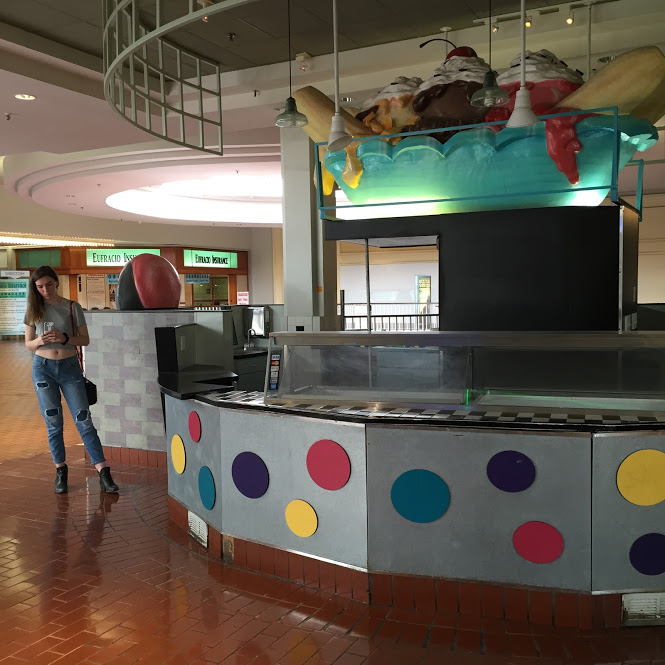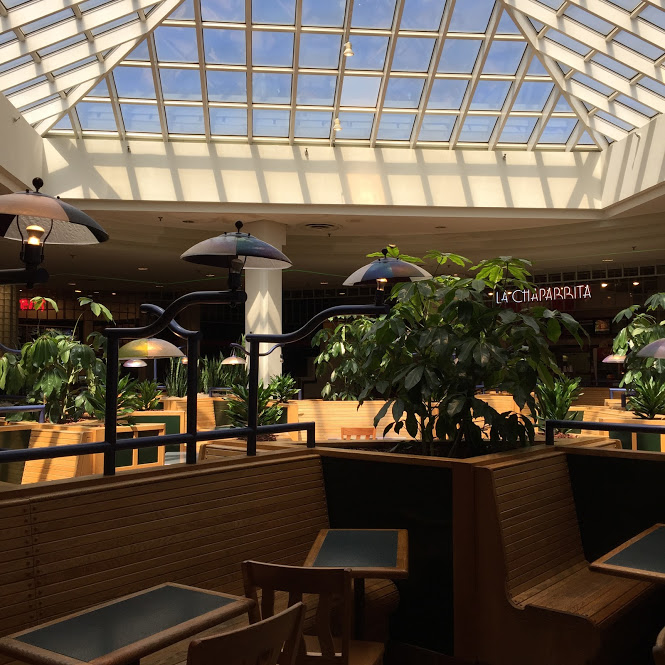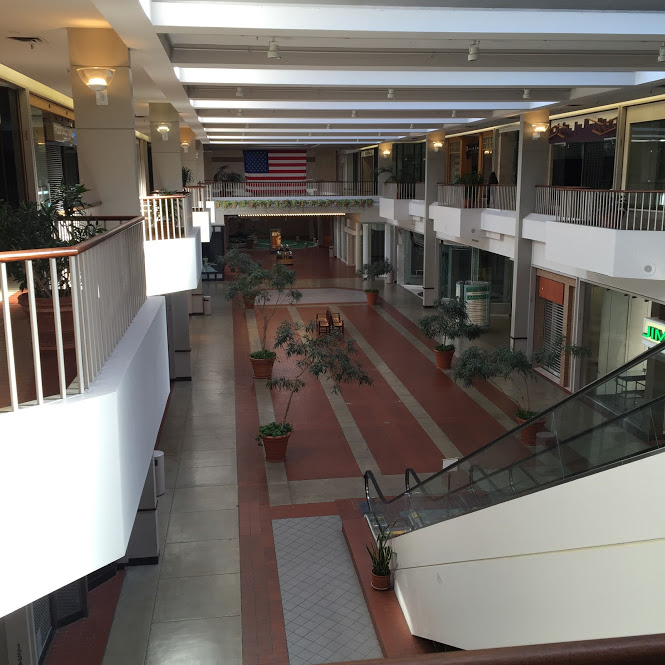
 Mall Journalism
Mall Journalism

The first time I walked around a dying mall was Highland Mall in Austin. It’s now a community college campus, but up until a few years ago, it was a half-occupied mall. I started visiting Highland Mall a lot, in the summertime if I remember correctly — cool floors and empty parking lots on hot summer days. It was quiet, sparsely populated, and refreshingly not hip. In a sea of conceptual places, of minimalist fonts and specifically themed bars, this place drew a comforting blank.
Wandering slowly through the lower level and upper level as tinny ‘70s music piped through the speakers was like church to me. Many of the stores were closed, and I could look in the windows and wonder what was in there before. There was a candy store, a boutique that sold lots of crop tops and jeweled bikinis and off-kilter graphic tees, and my favorite spot, the food court. It was a truly beautiful food court. A skylight swam over the court, and planters ran the lengths of the wooden booths. The most popular place was Blenders, a quintessential mall smoothie emporium run by an older woman with a long, thin gray braid running down her back. A few days before Highland Mall closed for good, she had a neon poster out for people to sign, thanking them for their business. It was as heartbreaking as it sounds!

But all of this still doesn’t tell me exactly why I — or the seemingly tons of people who collect on the YouTube channels of dead mall filmmakers or in obscure Facebook groups — love these places so much. And I’m not even sure “love” is the right word. They’re luridly fascinating, these big, empty buildings that dot so many suburban areas, but they’re also deeply personal and nostalgic. They also have been for some time an…aesthetic.
The photos from Signe Pierce’s Dead Malls Go to Heaven zine was the first time I saw the vibe recognized as art. The photo of White Flint Mall in North Bethesda, Maryland, with the turquoise and pink neon and desert landscapes painted on the walls being, I think, was my first introduction (thank you, Tumblr) to a feeling I had always loved — a vague, preemptively wistful feeling I sought ever since I was a kid.

If you’re not interested in retail and malls from a practical business perspective, then you’re likely interested in it for nostalgic purposes. But I think there’s also another underlying reason we love these places: It’s a space with a past that’s empty now. It’s the perfect soft setting to feel comfortable in, empty and unbothered, and energized by, kind of like wandering around vacant terrain in a video game — you can imagine what’s beyond the walls.
When the Washington Post visited White Flint Mall in 2014, months before it closed, two writers walked around the mall and took pictures of the deserted central atrium, the two-days-from-closing movie theater, and the car-less parking lot. “A final closing date has not been announced,” they wrote. “Until then you are free to head up Rockville Pike, pull into any parking spot you like and wander around. We did.”

Lead photo courtesy of Duck Pie. All other photos courtesy of my sentimental iPhone. Follow Kelsey on Twitter here.
Categorised in: Features, Suburban Feelings

